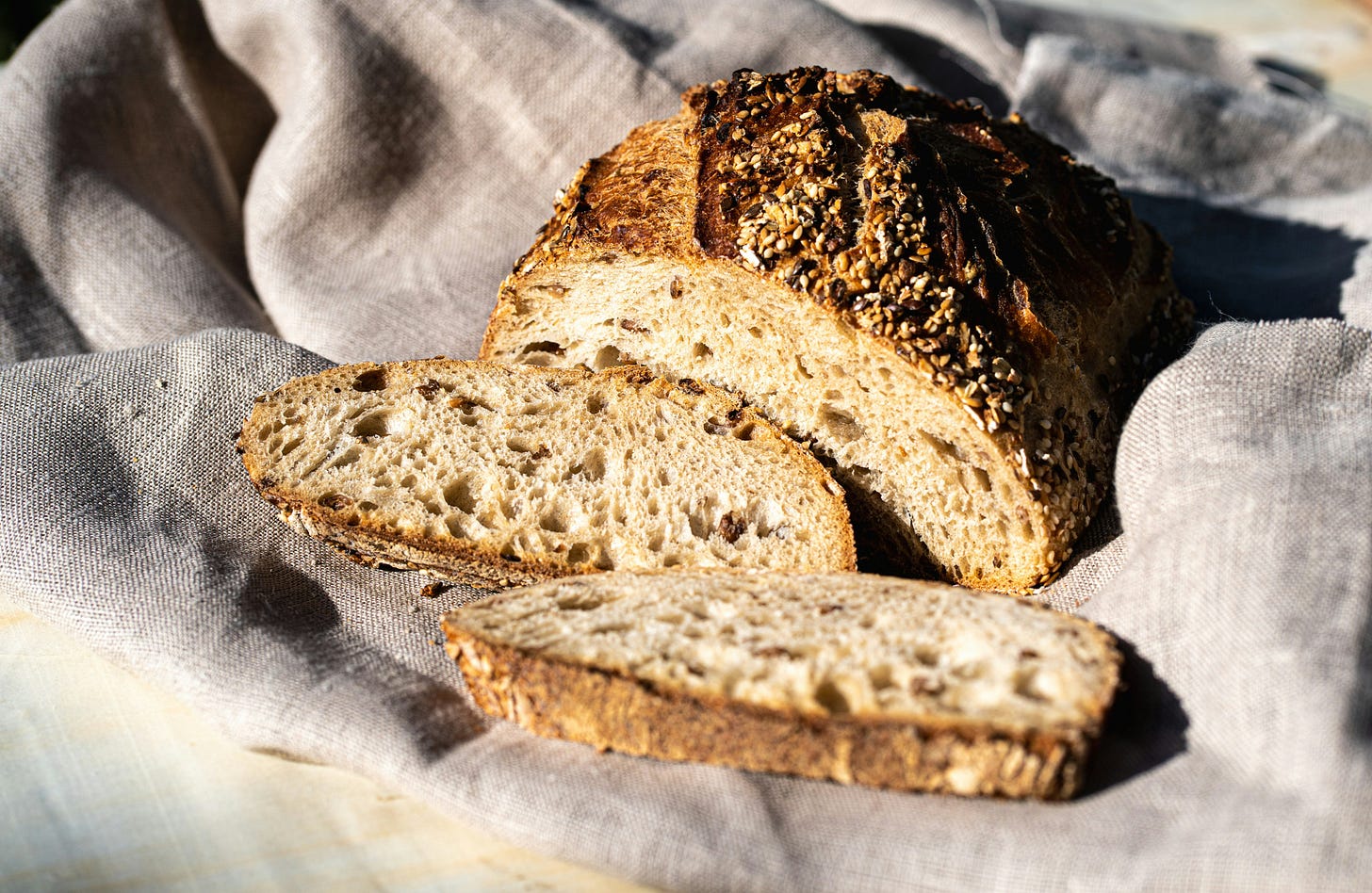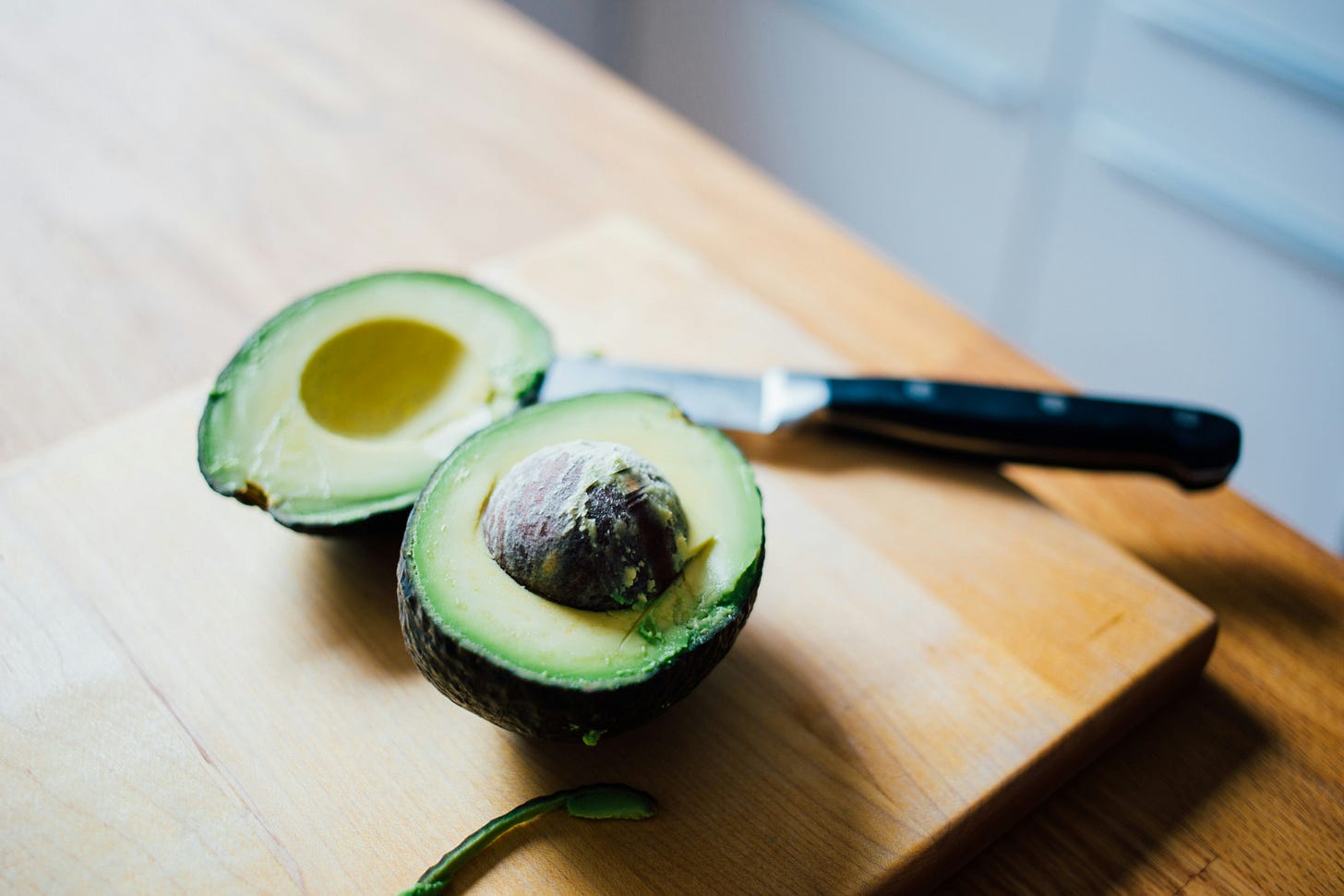How to Get More Fiber When You're Gluten-Free
It's not always so easy, but these tips can help.
Fiber is one of the most important nutrients you’re supposed to eat—but if you’re gluten-free, it can be difficult to get enough of it. That can lead to all sorts of icky health issues, including constipation. (Unfortunately, I know all about this from first-hand experience.)
I previously wrote about how the gluten-free diet isn’t as healthy as it’s perceived—and one of the reasons why is that it can be lacking in fiber. While there are certainly naturally high fiber gluten-free foods, many packaged items, like breads, are devoid of this nutrient.
The good news is, it’s easy to add more fiber to your life if you have celiac disease. I chatted with Jamie Baham, RDN, LD, a cancer prevention dietitian and the owner of Ladybug Nutrition, for advice on how to do exactly that.
Table of contents
Why is it so hard to get enough fiber when you’re gluten-free?
What are some other easy ways to get more fiber if you’re gluten-free?
What is fiber?
First things first: “Fiber is a non-digestible carbohydrate that is beneficial in so many ways,” says Baham. “This microbiome-friendly powerhouse aids in achieving satisfaction after meals, lowering cholesterol and blood pressure, and reducing colon cancer risk.”
Per Mayo Clinic, there are two types of fiber:
Soluble fiber dissolves in water, forming a gel-like material in the stomach that slows digestion and aids in lowering cholesterol and blood sugar. You can find soluble fiber in gluten-free oats, peas, beans, avocados, carrots, apples, bananas, and psyllium.
Insoluble fiber doesn’t dissolve in water and instead supports the movement of material through your digestive system, adding bulk to your stool. It’s especially beneficial if you have constipation or aren’t able to poop regularly. Nuts, beans, cauliflower, green beans, and potatoes contain insoluble fiber.

How much fiber should you aim for daily?
According to research out of the American Society for Nutrition, most Americans don’t get enough fiber. Per the most recent Dietary Guidelines for Americans (2020-2025), adults should aim for approximately anywhere from 25 to 35 grams of fiber daily, depending on gender and age (find the specific breakdown on page 146).
Want to go deeper into learning about fiber? I recommend checking out The Blood Sugar Method.
Why is it so hard to get enough fiber when you’re gluten-free?
For starters, Baham explains that wheat-based grains often contain this nutrient—and if you’re diagnosed with celiac disease, you’ll have to remove these traditional fiber sources from your diet.
Additionally, the Food and Drug Administration doesn’t require gluten-free products to be fortified with vitamins and nutrients the way their wheat-filled counterparts are.
Numerous studies—including this recent study out of Clemson University—show packaged gluten-free foods, like breads, are low in fiber. It’s not surprising then, that many people who follow a gluten-free diet are deficient in key nutrients, including fiber.
Something else to keep in mind? The American diet generally tends to be low in fruit and vegetable consumption, says Baham—and those are two good sources of fiber.
What are the best high fiber gluten-free foods?
“When traditional fiber sources like whole grain bread are removed from the diet, it’s important to replace them with gluten-free grains that still support adequate fiber intake,” says Baham.
According to Baham, some of the best gluten-free sources of fiber are:
Gluten-free oats (8.18 grams of fiber per cup)
Chia seeds (4.1 grams of fiber per per tablespoon)
Flax seeds (3.5 grams of fiber per tablespoon)
Hemp seeds (1.2 grams of fiber per three tablespoons)
“One of my favorite fiber-filled recipes to share with my patients with celiac disease is my Cherry Walnut Oat Muffins,” she says. (Note: Use gluten-free oats like these from Zego if you have celiac disease!)
I’ve written about the best gluten-free grains, and the following are also good options if you’re looking for more fiber:
Amaranth (5.2 grams of fiber per cup)
Black rice aka forbidden rice (4.33 grams of fiber per cup)
Buckwheat (4.54 grams of fiber per cup)
Brown rice (3.23 grams of fiber per cup)
Dry corn, used to make cornmeal (8.91 grams of fiber per cup)
Millet (2.26 grams of fiber per cup)
Quinoa (5.18 grams of fiber per cup)
Sorghum (12.1 grams of fiber per cup)
Teff (7 grams of fiber per cup)
Wild rice (2.95 grams of fiber per cup)

What are some other easy ways to get more fiber if you’re gluten-free?
Beyond adding more naturally gluten-free grains to your diet, Baham suggests prioritizing fruits and vegetables as they’re excellent sources of fiber too. Harvard Health Publishing recommends eating a minimum of three servings of vegetables and two servings of fruit a day.
Baham notes that one medium avocado contains around 10 grams of fiber, while a cup of raspberries offers about 8 grams of fiber. “I love adding avocado to protein bowls, omelets, and of course, gluten-free avocado toast,” she says. “Raspberries are a delicious addition to Greek yogurt parfaits with slivered almonds for an extra boost of fiber and crunch.”
Mayo Clinic also recommends eating more beans and legumes as well as adding ingredients like gluten-free oats to baked goods to increase fiber. When it comes to snacking, choose items that are naturally high in fiber, like whole fruits and raw vegetables. Gluten-free whole-grain crackers are another good snack option. (I like these crackers from Simple Mills.)
Just keep in mind that adding too much fiber to your diet at once can actually backfire and cause GI symptoms like gas and bloating. Mayo Clinic suggests slowly incorporating more fiber into your daily meals over the course of a few weeks to allow your digestive system ample time to adjust.
Have you struggled to get fiber on the gluten-free diet? What are your favorite gluten-free sources of fiber? Drop a comment and let me know!
Sources
Jamie Baham, RDN, LD, a cancer prevention dietitian and the owner of Ladybug Nutrition
The Nutrition Source. Fiber. https://nutritionsource.hsph.harvard.edu/carbohydrates/fiber/
Cleveland Clinic. Constipation. https://my.clevelandclinic.org/health/diseases/4059-constipation
Nutrients. 2020 Oct 21;12(10):3209. “The Health Benefits of Dietary Fibre.” https://pmc.ncbi.nlm.nih.gov/articles/PMC7589116/
American Society for Nutrition. Most Americans are not getting enough fiber in our diets. https://nutrition.org/most-americans-are-not-getting-enough-fiber-in-our-diets/
United States Department of Agriculture. Dietary Guidelines for Americans (2020 - 2025). https://www.dietaryguidelines.gov/sites/default/files/2020-12/Dietary_Guidelines_for_Americans_2020-2025.pdf
Current Developments in Nutrition. 2019 Mar 27;3(5):nzz020. “Not All Grains Are Created Equal: Gluten-Free Products Not Included in Mandatory Folate Fortification.” https://pmc.ncbi.nlm.nih.gov/articles/PMC6509050/
Plant Foods for Human Nutrition. Volume 80, article number 8, (2025). “Gluten-free Diet, a Friend or a Foe, an American Perspective.” https://link.springer.com/article/10.1007/s11130-024-01264-w
Missouri Medicine. 2020 Mar-Apr;117(2):119–123. “Gluten Free Diets – A Challenge for the Practicing Physician.” https://pmc.ncbi.nlm.nih.gov/articles/PMC7144711/
Institute of Medicine (US) Committee on Examination of Front-of-Package Nutrition Rating Systems and Symbols. 2010. “Overview of Health and Diet in America.” https://www.ncbi.nlm.nih.gov/books/NBK209844/
Mayo Clinic. Dietary fiber: essential for a healthy diet. https://www.mayoclinic.org/healthy-lifestyle/nutrition-and-healthy-eating/in-depth/fiber/art-20043983
USDA Food Data Central Food Details. Oats, raw. https://fdc.nal.usda.gov/food-details/1101825/nutrients
Nutrionix. 1 Tbsp Chia Seed. https://www.nutritionix.com/food/chia-seed/1-tbsp
Stanford Health Care. Flax Facts. https://stanfordhealthcare.org/medical-clinics/cancer-nutrition-services/recipes/flax-facts.html
Medical News Today. Health benefits of hemp seeds. https://www.medicalnewstoday.com/articles/323037
USDA Food Data Central Food Details. Amaranth grain, cooked. https://fdc.nal.usda.gov/food-details/170683/nutrients
SnapCalorie. Black rice. https://www.snapcalorie.com/nutrition/black_rice_nutrition.html
USDA Food Data Central Food Details. Rice, brown, long-grain, cooked. https://fdc.nal.usda.gov/food-details/169704/nutrients
USDA Food Data Central Food Details. Buckwheat groats, roasted, cooked. https://fdc.nal.usda.gov/food-details/170686/nutrients
University Hospitals. Cornmeal, whole-grain, yellow, 1 cup. https://www.uhhospitals.org/health-information/health-and-wellness-library/article/nutritionfacts-v1/cornmeal-whole-grain-yellow-1-cup
USDA Food Data Central Food Details. Millet, cooked. https://fdc.nal.usda.gov/food-details/168871/nutrients
USDA Food Data Central Food Details. Quinoa, cooked. https://fdc.nal.usda.gov/food-details/168917/nutrients
University Hospitals. Sorghum, 1 cup. https://www.uhhospitals.org/health-information/health-and-wellness-library/article/nutritionfacts-v1/sorghum-1-cup
USDA Food Data Central Food Details. Wild rice, cooked. https://fdc.nal.usda.gov/food-details/168897/nutrients
Healthline. 8 Gluten-Free Grains That Are Super Healthy. https://www.healthline.com/nutrition/9-gluten-free-grains
Harvard Health Publishing. How to get more fiber in your diet. https://www.health.harvard.edu/staying-healthy/how-to-get-more-fiber-in-your-diet
The Nutrition Source. Avocados. https://nutritionsource.hsph.harvard.edu/avocados/
University of Rochester Medical Center Health Encyclopedia. Raspberries, raw, 1 cup. https://www.urmc.rochester.edu/encyclopedia/content?contenttypeid=76&contentid=09302-1
Disclaimer: If you click on a link, I may get a small commission. This helps support this newsletter so I can keep writing it.




Great write up! It's another reason to make your own GF sourdough! Much higher in high fiber grains and far less starch than store bought GF breads.
Thank you!!! Great facts and examples. I’m slamming the chia seed pudding these days. Of course, always trying to up veggie and fruit intake as well!